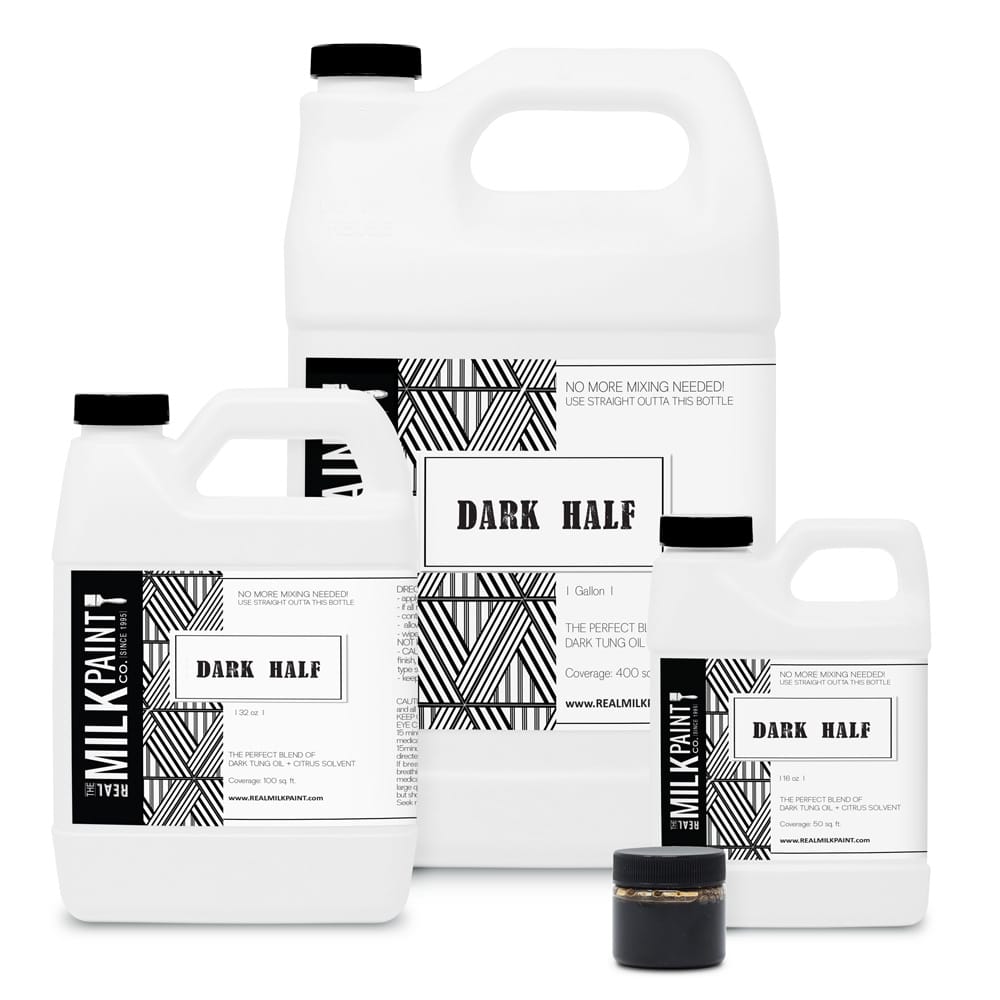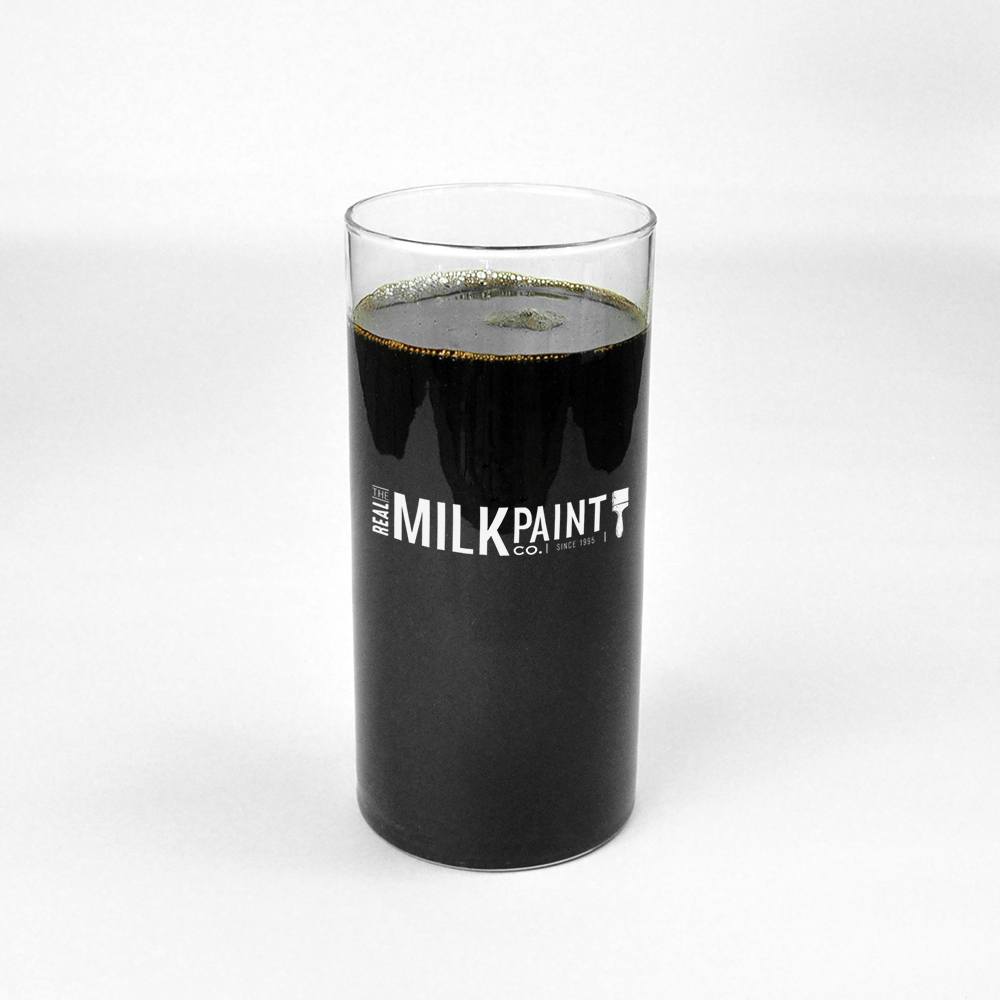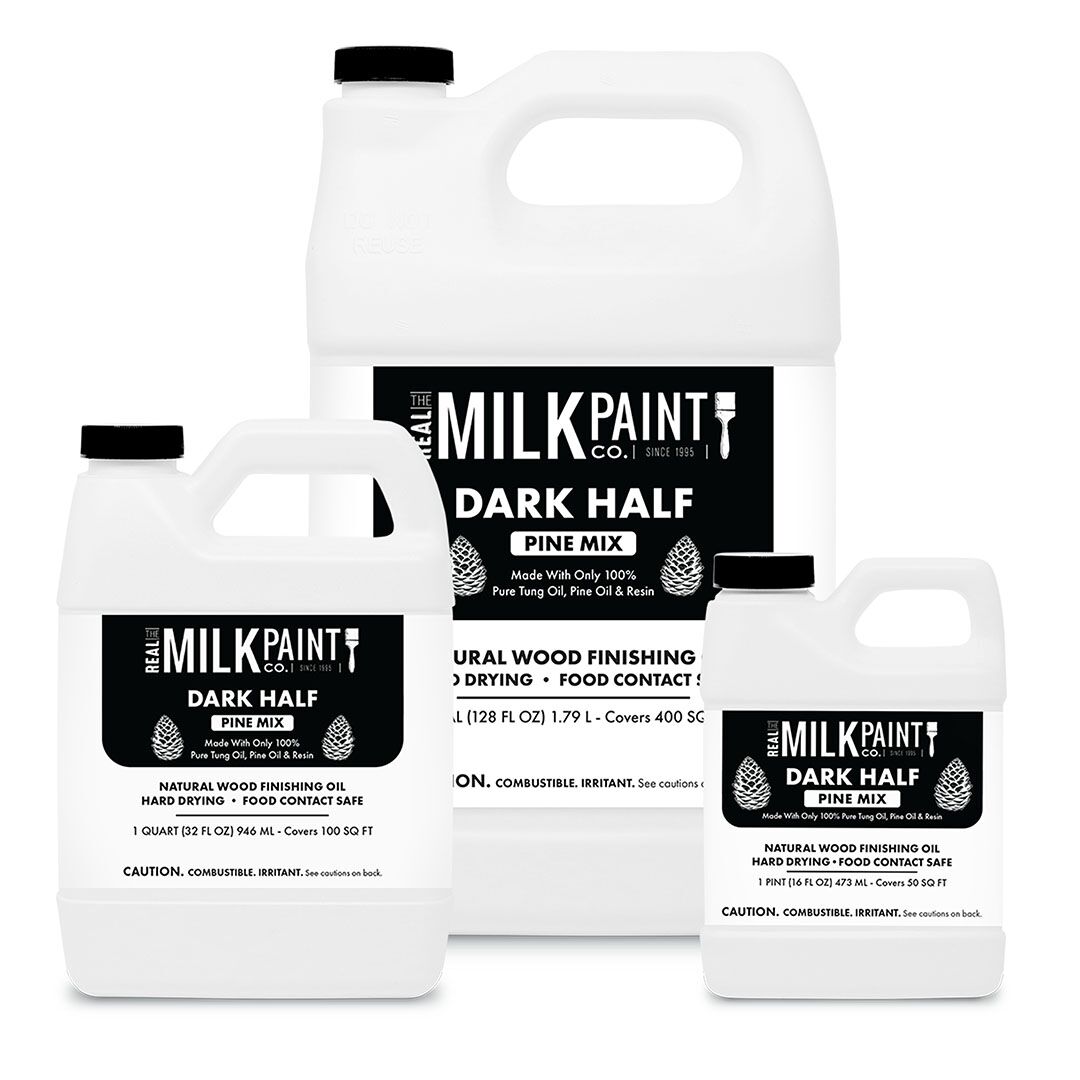Dark Half adds depth to your grain to instantly give an aged look. A perfect blend of our Dark Tung Oil and natural, food-grade thinners Citrus Solvent or Pine Oil. Most projects require the thick viscosity of raw tung oil to be thinned in order to soak into the surface, so we have done that for you!
Dark Half
From: $4.99
- Description
- Directions
- Hints & Tips
- Wood Samples
- Oil Calculator
- Oil Thinning Guide
- Ingredients & SDS
Product Description
INSTANTLY ADD DEPTH TO YOUR GRAIN FOR AN AGED-ANTIQUE FINISH
This is the same Dark Raw Tung Oil but we have mixed the Citrus Solvent in for you! The darkened color of Dark Half comes from mixing in a naturally occurring resinous hydrocarbon for color. The resin is non-carcinogenic and does not contain any PCBs. Dark Half by The Real Milk Paint Company is water and alkali resistant. It resists marring, penetrates well, is elastic, and is unlikely to check. Dark Half penetrates deep into the wood pores filling them up, consolidating the wood surface, and building a dark matte wood finish. It should be kept in an airtight container with minimum airspace.
The Citrus Solvent used in this product is food contact safe and is derived from the skin of lemons, oranges, lime, and grapefruit. The Citrus Solvent evaporates into the air. Any time you crush and smell a plant you smell the evaporative oils, this is why there is a citrus scent to this product.
Directions
There are four phases when it comes to using Dark Half for your projects.
- Preparation
- Application
- Curing
- Maintenance
Hints & Tips
- Do not apply or leave fresh tung oil on a surface in direct sunlight. This will flash cure it on the surface and will turn white.
- Do not sand between coats of tung oil. This is an application technique for tung oil varnishes, not 100% tung oil.
- Do not use tung oil over oil-based sealers, stains, and finishes.
- We recommend using a water-based stain to change the color of wood before tung oil is applied if a color other than that provided the tung oil is desired. For a lighter, all-natural, tung oil finish check out our Pure Tung Oil and Half & Half products.
- Do not use the “green” thinners now being sold. They contain water and will not mix with the oil.
- Remember by adding petroleum mineral spirits or other thinners, the oil may become toxic with these substances mixed into it, although the finish produced is not toxic because the thinners evaporate.
- The number of coats of oil to be applied will be determined by the intended use of the piece. One to two coats is enough for decorative work, paneling and molding. For surfaces that receive moderate to heavy use or handling need a minimum of three and on up to six coats for maximum protection.
- Applying tung oil until the surface becomes fully saturated will give the best results. This will be evident as the surface will not absorb more oil.
- Renewal and/or maintenance coats are thinly applied with lint-free cloths (old bed sheets work well) or old t-shirt material on an as need be basis. A two parts solvent to one part tung oil mixture is recommended for maintenance coats.
- Do not get hung up on the number of coats, let the wood tell you when it has reached its maximum saturation.
- Tung Oil will be in the wood up to the surface not on the wood like varnish or polyurethane topcoat. The end result is more like seasoning a cast iron pan. This product will give you a surface that will stand up to vigorous use and spills: water will bead on the surface.
- After the tung oil has completely cured (30 days) cleaning of the surface can be done using hot water and mild soap, such as dish soap. Avoid using harsh chemicals or acids for cleaning.
Dark Half Wood Samples
- Cedar Raw Wood
- Cedar Pure Tung Oil
- Cedar Dark Tung Oil
- Cherry Raw Wood
- Cherry Pure Tung Oil
- Cherry Dark Tung Oil
- Mahogany Raw Wood
- Mahogany Pure Tung Oil
- Mahogany Dark Tung Oil
- Maple Raw Wood
- Maple Pure Tung Oil
- Maple Dark Tung Oil
- Oak Raw Wood
- Oak Pure Tung Oil
- Oak Dark Tung Oil
- Pine Raw Wood
- Pine Pure Tung Oil
- Pine Dark Tung Oil
- Pressure Treated Raw Wood
- Pressure Treated Pure Tung Oil
- Pressure Treated Dark Tung Oil
- Walnut Raw Wood
- Walnut Pure Tung Oil
- Walnut Dark Tung Oil
- Yellow Pine Raw Wood
- Yellow Pine Pure Tung Oil
- Yellow Pine Dark Tung Oil
How much oil do I need?
No need to crunch numbers! Our handy oil calculator will help you figure out how much you need! To get started, enter the dimensions of the surface(s) you’re finishing (in feet).
For example, to finish two rooms, you would add the width and length of each floor. Enter a single floor dimension, click “add area”, then enter the next floor dimension and watch the math take place.
Don’t know which oil to use for the specific wood species you’re working with? This infographic should help answer that query! Use the guide below to locate the wood species you are working with. Then, use the color field to see which oil would be best to use for that wood species. This guide focuses mainly on common North American wood species. If your project wood is not listed, use the Janka Scale on the right-hand side to find a wood with a similar rating to yours.
What its made of
We believe in being honest with what is in our products. So, that’s why we provide the ingredients used in them so you can rest assured knowing exactly what’s in the product you purchase from us. It’s just a way we make it easier on you.
Dark Half is made of
- Pure Tung Oil
- Resinous Hydrocarbon
- Citrus Solvent
What is…?
- Pure Tung Oil is approved for food contact by the FDA. View document.
- The resinous hydrocarbon used to darken and color the pure tung oil is naturally occurring, non-carcinogenic, and PCB free.
- Citrus Solvent is a biodegradable, naturally-occurring solvent, as the main component is simply citrus peel oil. Citrus Solvent’s interesting chemical properties, pleasant citrus aroma, and is FDA-GRAS rating (“generally recognized as safe”), view document. Citrus Peel Oil is extracted from citrus rind. When citrus fruits are juiced, the oil is pressed out of the rind. This oil is separated from the juice and distilled to recover certain flavor and fragrance compounds. The bulk of the oil is left behind and collected as “food grade” citrus oil. After the juicing process, the peels are conveyed to a steam extractor. This extracts more of the oil from the peel. When the steam has been condensed, a layer of oil then floats on the surface of the condensed water. The result is technical grade citrus peel oil, which is the main ingredient in our Citrus Solvent.
Want to know more? Then take a look at our Safety Data Sheets (SDS) by clicking here.


